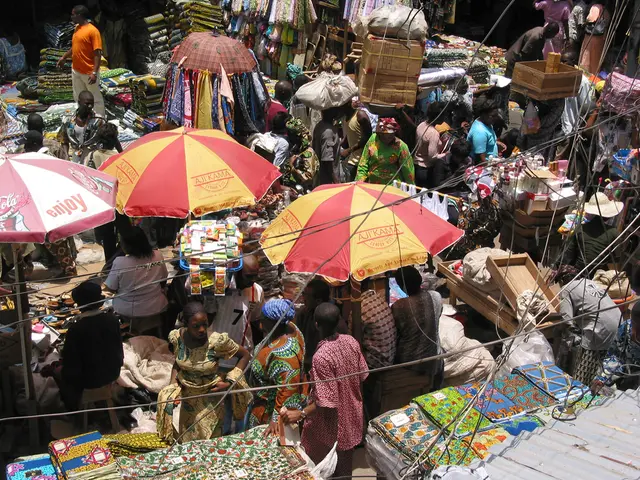Gold flight continues, with further price rises imminent
The price of gold has been on a steady rise, and analysts predict that this trend will continue in the coming years. Here's a look at the factors driving this prediction and the current state of gold reserves around the world.
The Bundesbank, Germany's central bank, has not increased its gold reserves but has slightly reduced them by transferring small amounts to the Federal Ministry of Finance. Despite this, the German gold reserves, totalling 1,641 tons, remain a significant portion of the world's gold reserves, with 1,236 tons stored in the Federal Reserve Bank in New York and an additional 405 tons stored in the Bank of England in London.
Experts believe that China's actual gold reserves are much higher than the official statistics suggest. China has almost sextupled its official gold reserves since the turn of the century, reaching 2,292 tons by the end of the first quarter of 2025. It is worth noting that China is the world's largest gold producer, with very little being exported.
The price of gold has risen significantly in recent months. A kilo of gold currently costs around 92,600 euros, up from around 80,700 euros. The current price per troy ounce of gold is approximately $3,300. Goldman Sachs estimates that the price could reach $4,000 by mid-2026.
Central banks have been net buyers of gold, purchasing over 700 tonnes in the past 12 months. This sustained institutional demand underpins upward price pressure on gold. Analysts at major institutions, including JP Morgan and Citigroup, anticipate gold averaging about $3,675 by late 2025 and surpassing $4,000 by mid-2026.
Several key factors are influencing these predictions. Central bank gold purchases, inflation concerns, expectations of monetary easing, and geopolitical risks are all contributing to the bullish case for gold. Ongoing trade tensions and fears of U.S. economic instability have driven safe-haven demand for gold, bolstering the bullish case.
In India, gold price forecasts in rupees show some month-to-month variations in 2026, with prices ranging roughly between 88,000 and 93,000 rupees per 10 grams from April to August 2026, indicating a modest downward trend in mid-year prices but with volatility.
Michael Eubel, head of precious metals at BayernLB, states that as long as central banks increase their gold reserves, the gold price will rise. Benjamin Summa, spokesperson for Pro Aurum, notes that central banks worldwide have acquired around 1,000 tons of gold annually in recent years.
The increase in the gold price has consequences for jewelers worldwide and their customers, with prices rising significantly but not in line with the gold price. The luxury goods market seems to have decoupled from the general purchasing mood and the crises of the world, with the German gold jewelry market reaching record levels in 2023 and 2024 despite rising prices and demographic change.
In conclusion, the consensus among analysts and market watchers is that gold prices will reach around $4,000 per ounce by mid to late 2026, driven mainly by central bank purchases, inflation concerns, expectations of monetary easing, and geopolitical risks. As the price of gold continues to rise, Germany's gold reserves are becoming increasingly valuable.
Investors might find it prudent to consider investing in real-estate, as the rising price of gold could potentially lead to higher financing costs. Given the increase in the gold price and the sustained institutional demand, it's plausible that central banks might also consider applying investments in other sectors to diversify their reserves.




